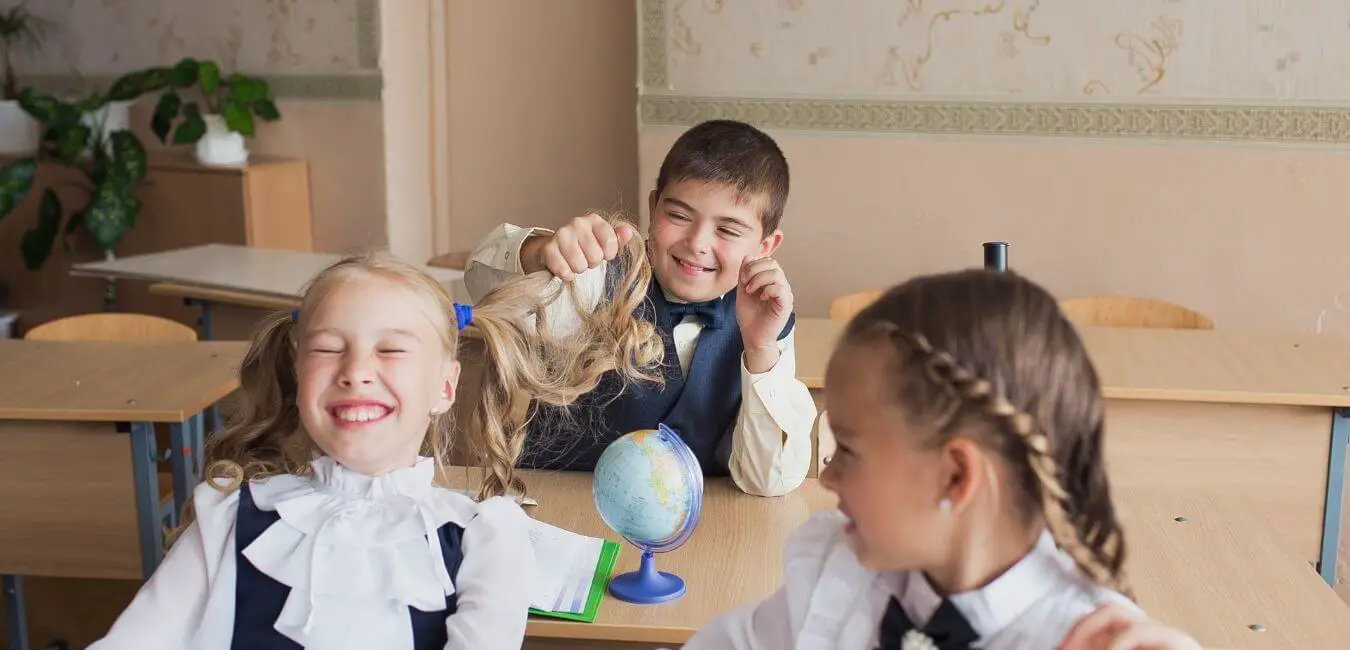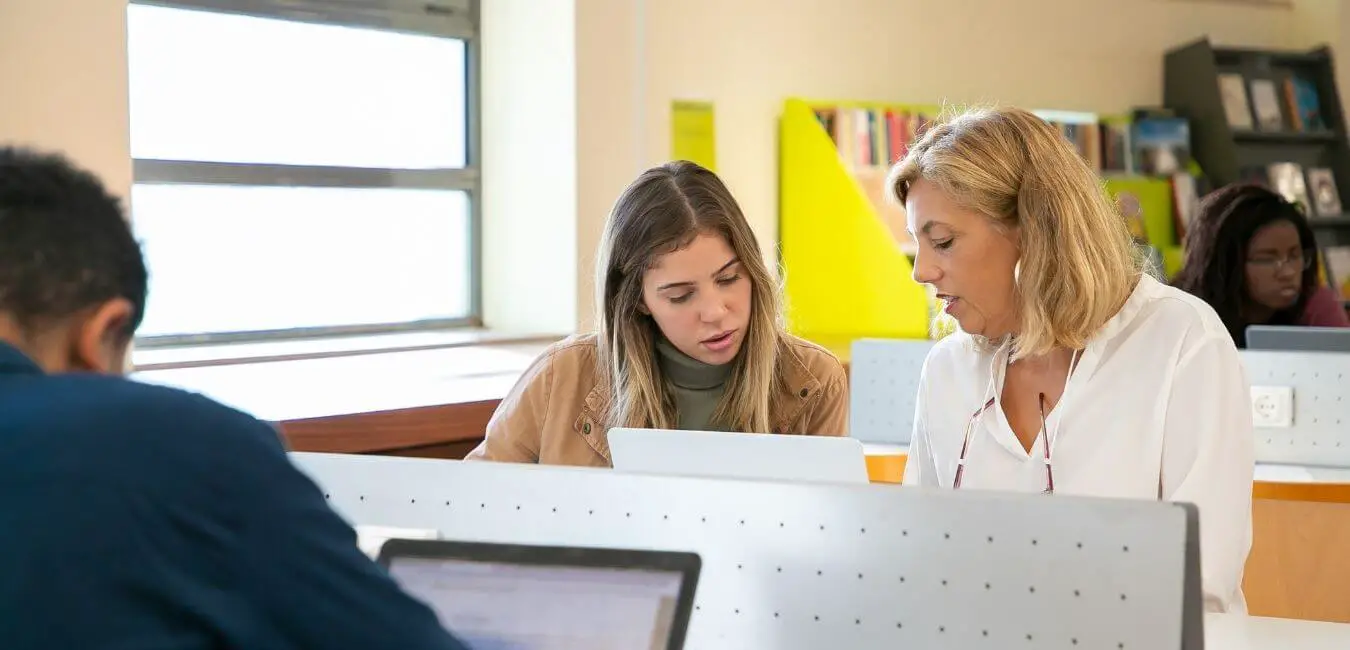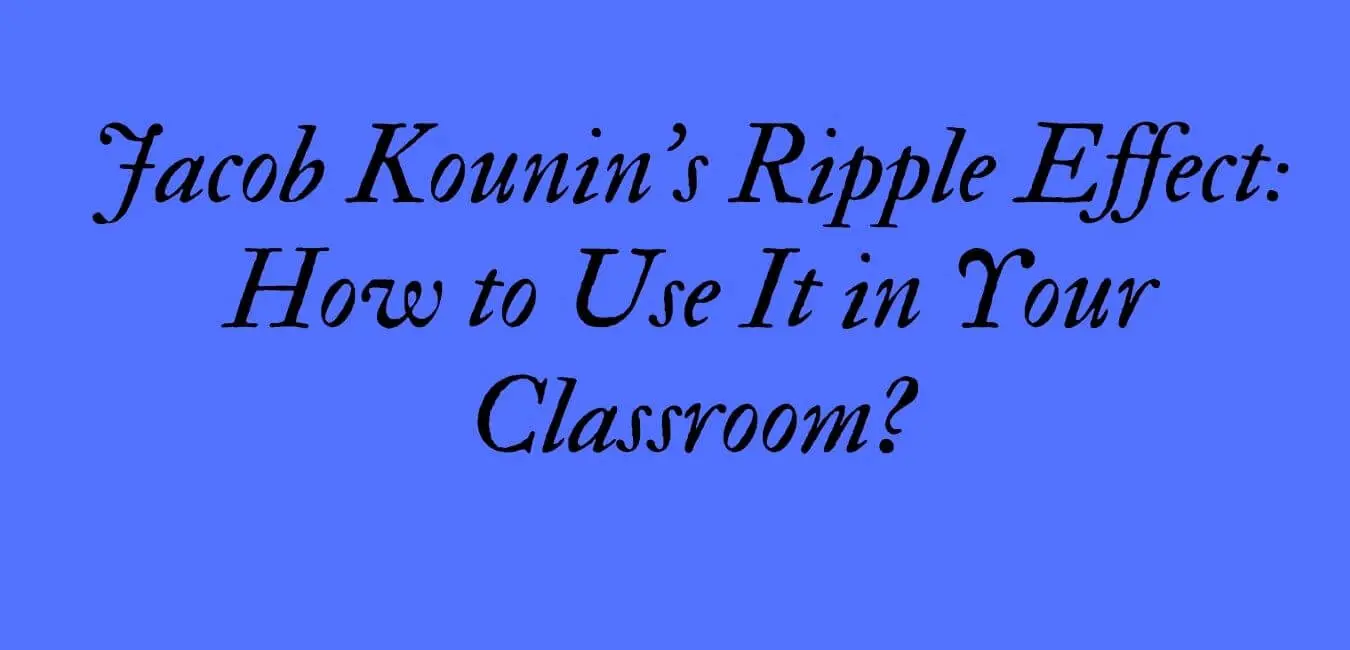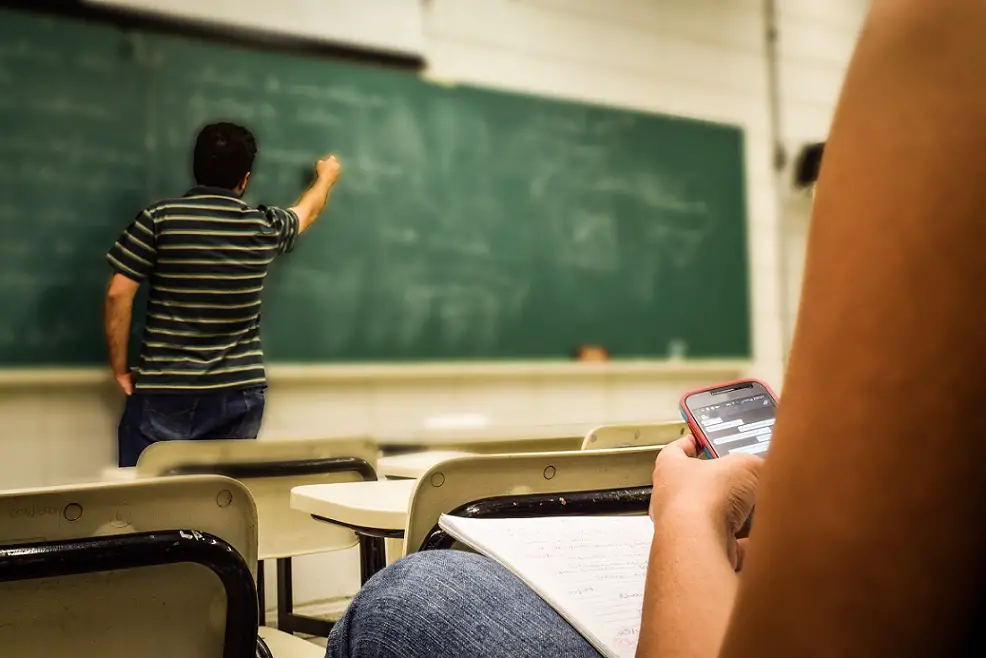Many of us have heard of “positive reinforcement” in the context of parenting. As parents, we know that positive discipline is more effective than negative discipline. When kids are given rewards for good behavior or an incentive to do better, they are more likely to continue on that path. Positive Discipline in education does the same thing by providing clear expectations and consequences with a focus on teaching social skills and problem-solving strategies rather than punishment alone.
Positive discipline is not easy and it’s important to remember there will be challenges along the way! But when we take time to teach students how their actions affect others and show them what they can do instead, we help them learn how to make our world a better place.
History and Evolution of Positive Discipline
A positive discipline is a systematic approach to managing children’s behavior. It features practices that help adults be empathic and understanding while guiding children to make good choices and ultimately become self-reliant, happy people. Positive Discipline consists of six basic concepts:
Positive discipline was developed in the early 1970s by Dr. Jane Nelsen who had worked as an elementary teacher before becoming a family therapist. The unique aspects of positive discipline that separate it from many other child management systems include its focus on preventing problems, encouragement of self-esteem, responsibility, and resourcefulness. These practices are based on the belief adults should set limits with children which is different than the traditional, authoritarian idea that adults must punish children to enforce rules. When punishments and rewards are removed, children can develop their own internal motivation to do what is necessary to avoid negative consequences like the removal of parental love and attention or unpleasant chores.
The key concepts behind positive discipline include
The six basic elements of positive discipline evolved over time as Jane Nelsen studied and conducted research on parenting styles. She found the most effective way to teach children was not by punishing them for bad behavior, but rather by rewarding them when they make good choices. As a result, the philosophy and strategies of positive discipline evolved over time and were guided by what research and testing showed worked best in raising children.
Positive Discipline is guided by six basic concepts:
1. The adult’s attitude sets the tone for the disciplined effort. It is assumed that everyone, both children and adults, wants to be happy and productive in life. The guiding principle behind positive discipline is to help people do well by doing good. This means when a child or an adult does something worthwhile, he or she will be praised. Likewise, when a child or an adult makes a mistake, he or she will also be lovingly guided to do better next time by making adjustments and corrections to improve behavior. In this way, children learn from their mistakes without being punished.
2. Children learn best through “natural and logical consequences.” This means that instead of adults punishing children for bad behavior, they should help them learn to produce better results by adjusting and corrections during the problem-solving process. For example, if a child throws his toy because he is frustrated with it, instead of taking the toy away as punishment, an adult may help him understand that throwing toys makes them break or disappear.
3. All behavior carries a message that can teach us something important about what that child needs or is trying to communicate. The adage “misery loves company” often applies to children’s behaviors, especially when they are sharing their unhappiness with the world around them. Adults should view problem behavior as opportunities for teaching and helping children make better choices in the future.
4. Limit setting is done with empathy and firmness to guide children’s behavior. A positive discipline approach involves teaching children how to make good choices by explaining rules, following up when rules are not obeyed, and rewarding individuals who choose to do what is expected of them. Positive Discipline does not mean kids get whatever they want whenever they want it. Instead, Positive Discipline means that parents or teachers work to teach children how to set limits on themselves by being considerate of others while being respectful of authority figures.
5. Unconditional love is a necessary part of discipline for both children and adults. To be effective, there must be a connection between parent and child. Parents need to love their children unconditionally to be able to provide a positive discipline environment. When a child makes a mistake, rather than punishing or shaming them for poor choices, adults should help children find ways to improve their behavior by helping them understand that they still have value as a person even if they make mistakes. Adults should behave in a dignified way, realizing that children learn best from observation. Adults who model positive behavior for their children provide the greatest example of love and empathy.
6. All people deserve to be treated with respect. In a positive discipline environment, adults recognize the innate dignity and worth of every person by respecting them as individuals rather than using rewards and punishments. Respect is demonstrated by giving children choices, allowing them to make decisions that are age-appropriate, and by guiding them to solve their own problems.
Over time positive discipline evolved because of testing what worked best in raising children. It was tested with adults first so they would understand without confusion that they were actually adults. A similar problem-solving process is now used with children to help them learn ways of making the best decisions for themselves. Positive discipline is also called gentle discipline as it provides guidance and loving feedback that respects the personhood of those receiving the feedback.
What Are Some Examples of Positive Discipline?
A positive discipline is a form of discipline that focuses on teaching children correct behavior as well as how to behave. It is based on the idea that positive reinforcement is better for a child’s self-esteem and motivation than punishment, which can have negative effects. It also teaches them to become responsible individuals who will contribute positively through cooperation with others.
Positive Discipline in the Classroom
A classroom is a place where teachers practice positive discipline. Using this method, teachers do not rely heavily on punishment but instead focus on building up their students. They emphasize rewarding good behavior and encouraging children to learn from their mistakes. One example of positive discipline in the classroom is giving praise for each student’s achievement and effort. Outstanding work should be rewarded with a high grade, while less than satisfactory work should be acknowledged but not overly criticized. Teachers can also give students time to reflect on their own behavior after their mistakes by offering them the opportunity for self-correction or raising questions about what happened and how they could improve.
Positive Discipline in School
Sometimes, students may be disruptive or disrespectful to their teachers. There are many creative ways that schools handle situations like these with positive discipline. Schools could offer students additional clarification for course material if they ask questions during class. They could assign extra homework or assignments to make up for work that has not been done properly. If the student needs to stay after school, the teacher may also provide them with extra work.
Schools can teach children many valuable lessons about positive discipline at a young age. Most importantly, these experiences will help them learn how to become responsible people who contribute positively through teamwork and cooperation.
Positive Discipline and Classroom Management?
What’s the difference? It’s easy to see that these two concepts are related – both focus on building positive relationships with students and encouraging student engagement – but they’re not exact synonyms.
Positive Discipline and Classroom Management: 7 Ways They’re Related
1. Positive discipline and classroom management both aim for effective teaching. The goal is to train students to become successful adults, and teachers work toward that goal by modeling behaviors they want to be reflected in their learning environment.
2. Positive discipline and classroom management both use a system of rewards and consequences. Some suggest this is a negative aspect of positive discipline – rewarding certain behaviors can be seen as bribery – but it’s the foundation for many behaviors modification and classroom management programs.
3. Positive discipline and classroom management both use praise to encourage the behavior. This doesn’t mean teachers should reward every student all the time; it means that when they see something positive happening, they should acknowledge and reinforce it.
4. Positive discipline and classroom management both seek to empower students while limiting their power over others. Teachers still want to establish their authority, but they also want students to realize the power they have over their own behavior.
5. Positive discipline and classroom management both promote caring relationships between teachers and students. For a teacher to build trust with his or her students, he or she must be genuine in showing care. Without that, punishments can’t be effective.
6. Positive discipline and classroom management both emphasize the use of self-analysis. Teachers should try to understand their own behavior in order to better influence student behavior. When they see what works, they can repeat it more often, and when they see what doesn’t work, they can try new strategies.
7. Positive discipline and classroom management both stress the importance of patience. When teachers feel overwhelmed by their students, they’re less likely to be influential. Give yourself time to get through difficult days, and your students will follow suit.
Positive Discipline and Classroom Management: 10 Ways They’re Different
1. Classroom management focuses on the more immediate issues, like controlling the classroom or preventing disruptive behavior. Positive discipline is more long-term.
2. Classroom management looks at rules and consequences to maintain order. The positive discipline focuses on students’ relationships with one another and encourages them to build their own individual learning plans.
3. Classroom management takes a punitive approach; positive discipline comes from a place of care.
4. Classroom management is about establishing authority by employing traditional strategies like rules, consequences, and punishments; positive discipline focuses on building trust in order to establish rapport.
5. Classroom management doesn’t focus on the teacher’s role in influencing student behavior; when teachers employ positive discipline, they’re more self-aware of their own influence.
6. Classroom management can be used in any environment, while positive discipline is only effective in a supportive learning space.
7. Classroom management looks at the short-term consequences of student behavior; positive discipline focuses on the long-term effects.
8. Classroom management can take priority over students’ individual needs; positive discipline encourages individual growth.
9. Classroom management is primarily focused on the teacher; positive discipline puts equal importance on both teachers and students.
10. Positive discipline is an approach, while classroom management is a technique.
Positive Discipline in the Classroom: 10 Ways It Can Be Used with Students
1. Use positive discipline to give students an opportunity to take responsibility for their own behavior.
2. Positive discipline can help students reflect on what they’ve done and how it impacted others, especially in group settings when several children are involved.
3. Give positive discipline when you see something good; this encourages more of that kind of behavior.
4. Give positive discipline when you see students helping one another or working together toward a common goal.
5. Use positive discipline to encourage open communication.
6. Give positive discipline when you see students compromising with one another instead of arguing.
7. When students are being disruptive, use positive discipline to encourage them to take responsibility.
8. Use positive discipline when you see students looking out for one another’s safety, regardless of whether they’re being helpful or not.
9. Give positive discipline when you see students advocating for each other.
10. Use positive discipline to show your commitment to working with your students to fight bullying.
Positive Discipline in the Classroom: 10 Ways It Can Be Used with Teachers
1. Give positive discipline when you feel overwhelmed or frustrated. Remind yourself that it’s not about your students but about your relationship with them.
2. Use positive discipline to get back on track when you’re feeling angry, sad, or disconnected.
3. Encourage positive discipline when you see students demonstrating self-control instead of using force to solve problems.
4. Give positive discipline to show your support for your students, especially in social situations like lunch or recess where they might need encouragement from a teacher before trying something new.
5. Use positive discipline as a reminder to reflect on your approach to teaching so that you can work to improve it.
6. Use positive discipline when students are being rude or disrespectful.
7. Give positive discipline when you have an opportunity to teach life lessons. For example, if a student showed up late for school, you could use the situation as a chance to talk about the importance of time and punctuality.
8. Use positive discipline in your classroom when you’re unsure how to handle a situation. Isn’t that where most teachers need guidance?
9. Give positive discipline when you see students pushing themselves to do better, even if it’s at their own pace.
10. Use positive discipline to show your support for students who try, no matter how difficult or challenging the task may be.
Positive Discipline in the Classroom: 10 Ways It Can Be Used with Parents and Guardians
1. Use positive discipline to thank parents and guardians, especially when you see their children doing something good and positive. You could make it a point to let the parents know in person or send them a quick email.
2. With positive discipline, you can thank parents and guardians for their support of your efforts to teach their children.
3. Use positive discipline when you recognize that parents are struggling. It doesn’t have to be anything major; it could be as simple as an email that announces which homework needs to be completed over the weekend.
4. Use positive discipline when you see a parent or guardian encouraging their child. It could be something as little as praising good grades on a report card, but it’s the acknowledgment and encouragement that helps children know they’re valued and loved.
5. Use positive discipline to show appreciation for parents and guardians who keep their children on task during your class time. It could be something as simple as notifying them that their children aren’t participating or coming to the board to answer questions, but it shows support and respect.
6. Use positive discipline when you see a parent or guardian encouraging their child to do better. It’s not always about achievement or grades but could be something as simple as noticing that a child is trying their best.
7. Use positive discipline when you see parents and guardians respectfully disagreeing with one another. It can seem like the easiest time for people to talk awful about one another, so it’s good to see parents and guardians who aren’t allowing themselves to be dragged down by another adult.
8. Give positive discipline when you want to show your appreciation for the importance of parenting classes. You don’t have to offer a class or push parents into taking one, but just let them know how helpful it would be for their children’s education and growth.
9. Give positive discipline when you see parents and guardians making an effort to work on communication. It might even be as simple as asking one another about their day or offering ideas after listening or respecting each other’s opinions.
10. Give positive discipline if a parent ever asks about how they could help. It might be as simple as asking about how to help with homework, but it’s nice for parents to know that you’re willing and open to having a conversation.
Positive Discipline and Classroom Management: Sample Activities
1. There are several ways you can use positive discipline in your classroom. For example, if students are late to class, give them the opportunity to tell you why they were late. You can follow up with other questions like ‘What are three things you could do to be on time?’
2. If a child is not paying attention in class or making inappropriate comments, take his or her positive behavior into account when speaking with him or her. For example, you might say something like ‘You’ve been on task for most of the class today; let’s see what you can do to keep it up.’
3. If students are tapping their pencils or making other distracting noises, ask them what they think the appropriate volume is for classroom discussion. You can also ask them what they think the consequences will be for being off task.
4. If a child is interrupting classmates while they are working, ask students how they can politely get that classmate’s attention without interrupting. Students might answer that they could raise their hand or tap the student on the shoulder.
5. Write positive discipline ideas from your school on a board. Then have students brainstorm additional ideas from home or from their previous school that they might use to form a class set of rules.
6. When your class starts getting loud, tell them that if you can’t hear yourself think, then it’s hard for anyone else to hear themselves think either. You can ask what they think would be an appropriate volume for the classroom.
7. Use positive discipline to show appreciation for parents and guardians whose children remain on task during your class time. It could be something as simple as notifying them that their children are participating or coming to the board to answer questions, but it shows support and respect.
8. Give positive discipline when one of your students misses a day and you notice them trying to catch up on classwork and homework. It might be as simple as finding ways to check in with their classmates and see what they missed or how they can get involved again.
9. If students express frustration at work they are doing in class, ask them if they still think it is worth doing. They could come up with solutions like asking for additional help from the teacher or taking a break.
10. Give positive discipline when a student works well independently but struggles when working collaboratively with his or her classmates. You might try breaking students into pairs to work on projects or giving them independent time when they finish early.
11. If a student is struggling with in-class assignments, ask him or her what he or she thinks would make completing the work easier. He or she might ask you for help, but it’s important that he or she has an opportunity to solve the problem independently.
12. If your class is noisy, tell them that you understand their feelings, but it’s hard for you to think when everyone is talking at once. Ask what they think would be appropriate conversation topics and how they might organize themselves, so everyone gets a chance to speak.
13. If a student is asking too many questions, ask them if they know how to research information independently. They might answer that they need help with finding reliable sources or formulating search words; let them know you’re available for assistance.
14. When students are working on independent projects and not listening when it’s time to switch activities, ask them what they think their classmates are working on. They might find that they’re interested in how someone else is completing the assignment, but if not, tell them you’d appreciate it if everyone at least tried to listen to one another.
15. If a student has been exhibiting good behavior for several days, give an extra assignment or privilege. They might be surprised and motivated to work harder; the class might also catch on that good behavior leads to good things!
16. If your room feels chilly, tell students that you understand it’s difficult to think when they’re cold. Ask them if it would be helpful for someone in the room to bring up the temperature or if they know of other ways to stay warm.
17. Give positive discipline when a student doesn’t participate in your class. Ask him or her how you might encourage their voice and ask the rest of the group if anyone has suggestions for making it easier for everyone to contribute.
18. If good behavior is not met with consequences and bad behavior is not met with consequences, students will assume that both behaviors are acceptable. If you catch a student doing something good, acknowledge it and call the rest of the class to attention so they know what’s going on.
19. If your students don’t seem as excited as you’d hoped about an upcoming assignment or project, ask them if they know what they think will be the most important part of it. They might share their opinions about how to make the project more interesting, and you might ask for suggestions for making it easier.
20. If a student is angry and refusing to do work, ask him or her if he or she knows why he or she is having trouble focusing on the assignment. They might not know, but they could try to figure it out; let them know you’re available if they need help.
Check the surprising reasons why classroom management is important here.
Final Thoughts
A positive Discipline is an approach to teaching that focuses on the social, emotional, and behavioral development of students. It can be difficult for teachers who are new or experienced alike to manage a classroom full of kids with different personalities, learning styles, and skill levels. Positive discipline helps in managing these differences by providing opportunities for student choice while still holding everyone accountable for their actions. This includes letting them know you’re available when they need help to prioritize assignments or understanding what’s being taught in class. One thing we want readers to take away from this article is how important it may be to take care of yourself as well as your students if you hope to thrive during the school year! Read more articles on classroom management here.














